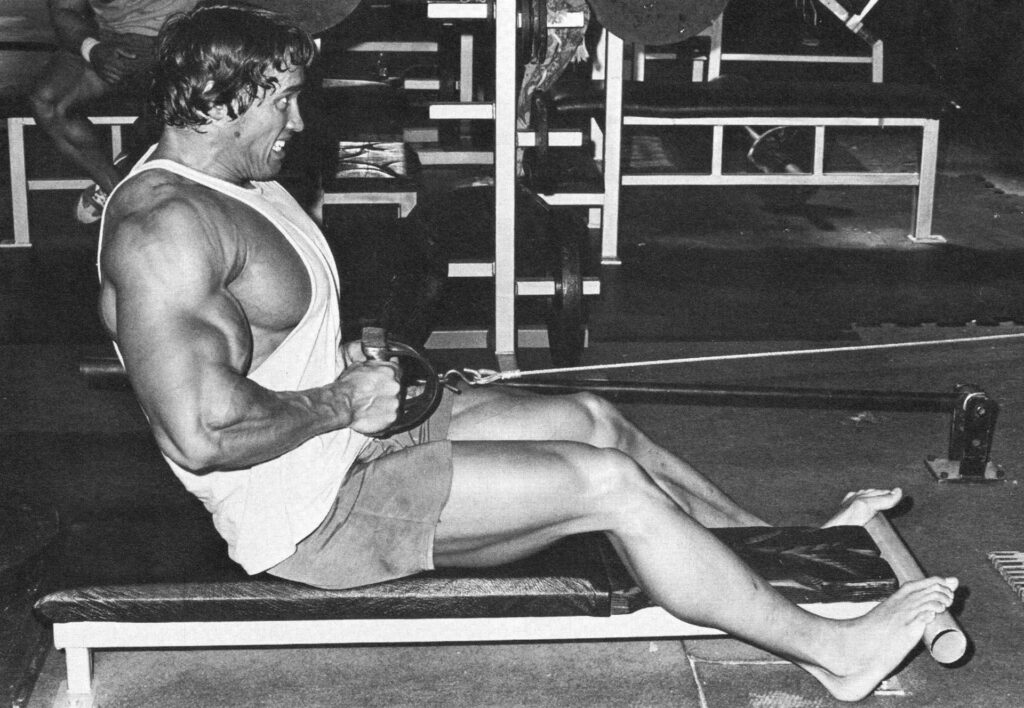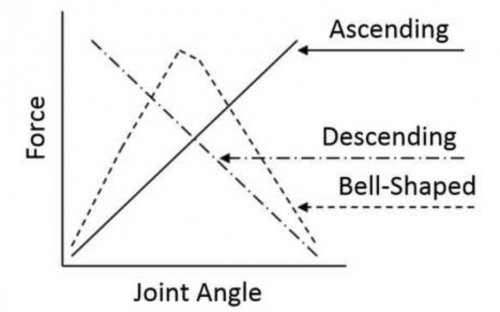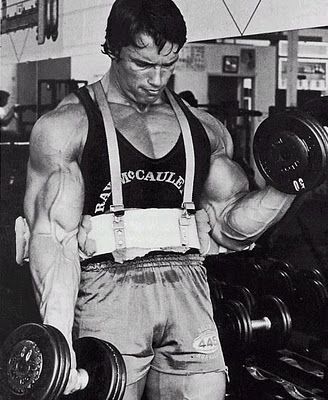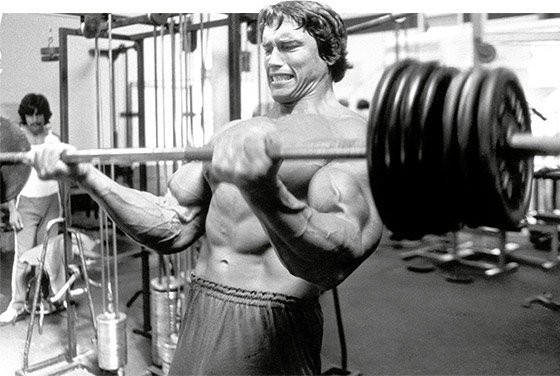Who doesn’t want to have big arms? Nobody would rather boast puny noodle limbs over menacing pythons.
And while the internet is saturated with various methods promising to help guide you to 18″ guns, some of the advice offered is mundane, generic, and serves only to create return readers disappointed in their lack of upper arm girth.
If you’re a natural lifter, you must be endowed with abundant patience as it will take longer than you’d like to reach your goals.
But still, you can stretch the sleeves of many-a shirt by applying some of these tips into your routine.
Do Compound Movements

I have never seen a non-synthol user with big arms that doesn’t train compound movements. If you want big arms, you HAVE to do compound movements.
Taken from: https://herculeanstrength.com/want-big-arms-do-compound-lifts/
Getting stronger on compound lifts will also translate to heavier working loads on isolation exercises.
In my experience, I could do tricep pressdowns with significantly greater loads after increasing my bench press.
I’m not saying you shouldn’t neglect isolation work — it matters. Isolation work is absolutely necessary for mind-muscle connection, directly targeting the muscle, and correcting any potential mechanical imbalances brought about by compound movements.
Isolation work is the cherry on top of your compound movements.
This is why many gym bros opt for splits such as chest and triceps, back and biceps, or shoulders and arms. The compound movements pre-exhaust the arms and the isolation work takes it over the edge.
A relatively uncommon split I used to like when I was younger was chest and biceps followed by back and triceps on another day. I would be training the antagonizing arm muscles as a way to add increased training stimulus to what I believed to be a lagging body part — my arms.
I, personally, found that targeting the arms directly after focusing on a major muscle group would overtrain them, and my body responded better to less volume, but more frequency.
As a natural lifter, you should seek to train with higher frequency but lower immediate volume (spreading total volume throughout the week). You can hit each upper body part 2-3 times a week if you split your volume wisely.
And your isolation work should strive to hit every major head in the arm and incorporating a variety of movements with differing strength curves according to your mechanical weaknesses. For example, with cables, the strength curve emphasizes greatest resistance near the beginning over the movement; whereas, with free weights, the strength curve peaks near the middle of the movement.
The one problem with compound movements is that they only partially contract the arm — a full range of motion is needed to get the most out of arm development.
Do Isolation Work Before Compound Movements
You may look askance at this suggestion.
While it’s customary across gyms around the globe to polish off your back/chest/shoulder days with a few sets of isolation work targeting the arms, try pre-exhausting your biceps before pulling movements and triceps before pressing movements.
By tearing down the muscle fibers before going into the major compound lifts, you’re effectively lifting similar or identical compound loads in a state of pre-exhaustion, thus adding to the net effort required to complete the compound lift with good form.
Your arms will be burning and screaming — believe me.
But this is merely one way to help grow your arms faster than you’d ever imagine.
As a natural lifter, I’m at my genetic limit — I won’t put on much more muscle (maybe a pound if I’m lucky) unless I were to start taking performance enhancing drugs. But the other day, I decided to spice things up by hitting a set of curls with a slow negative before doing pullups with a two-second hold at the top. Needless to say, my arms were BURNING after each set.
Slow Down The Negative Portion
Ideally, the total time under tension should be between 30-40 seconds per set.
If your muscle-building sets are anywhere between 10-15 reps, the logical answer would be slow down the negative portion of the lift.
For example, when doing dumbbell bicep curls, lower the weight slowly — between 3-5 seconds on the descent — as this will tear more muscle fibers to elicit more growth.
However, don’t ease tension off or reset between sets by fully extending your arms between sets.
Slowing the negative portion of the movement down can translate to massive muscle gains if done correct.
On average, your negative (eccentric) portion of the lift is around 30% stronger than your lifting (concentric) portion. This is why you might see spotters helping with the concentric portion, but taking their hands off the bar for the eccentric portion.
BONUS TIP: At the end of each set of tricep pushdowns, as your arms are screaming with lactic acid, hold the top of the lift for as long as you can to tear down more muscle fibers even when you’ve reached failure — a method to go well beyond failure.
Manipulate Strength Curves to Your Advantage

Various different lifts exaggerate the strength curve at different parts of the movement.
For strength training, I usually advocate the use of resistance bands and chains to force the lifter to hit heavier loads at the same velocity as lighter loads as a means to gain strength.
For muscular hypertrophy, progressive overload is still the fundamental principle for getting bigger.
If you’ve hit a rut, adding a resistance band to your bicep curls or triceps extensions to add tension nearer to the peak contraction can help tear more muscle fibers as you’re tricking yourself into lifting heavier weights.
And it doesn’t have to end there, either. You could add a band to your pressing movements, for example, to shift more emphasis to your triceps. You could add a band or a chain for your pulling movements too, to shift more emphasis to your biceps.
Train Arms More Often

As the arms are smaller muscles, they can be trained more often.
If you’re cautious and sensible with training volume, you can train arms 3-5 times a week.
Of course, if you do a 1000-rep style workout every day, you won’t see the results you’d like as you’d be overtraining the muscles. In fact, you’d be wasting your time and getting frustrated at your lack of progress.
Learn to split training volume wisely so that you get the best of both worlds.
In an upcoming eBook, I talk about how you can lift heavier weights more frequently by NOT overstimulating each time and actually having a greater net volume on a weekly basis.
Workout Idea
For example:
Monday: Chest and Arms
Pick one Triceps movement and two biceps movements
Tuesday: Back and Arms
Pick one biceps movement and two triceps movements
Wednesday: Rest
Thursday: Shoulders and Arms
Pick one triceps movement if you are pressing, two if you’re not, and two biceps movements
Friday: Legs and Arms
Pick one bicep and one tricep movement and do them before your main lifts
Saturday: Arms
Pick one arm-heavy compound movement for both bicep and triceps (eg weighted dip, weighted chin up, close-grip bench press, JM press, narrow-grip rows). Then, one triceps and one biceps movement.
Sunday: Rest
In total, you will have completed 6-7 isolation exercises in the week — with nowhere near the fatigue and soreness that some lifters might experience by attempting the complete that workout in one session. Moreover, those exercises would be executed with heavier weights and higher quality due to the lack of fatigue.
Don’t Stay Married to One Rep Range

We’ve all heard that somewhere between 6-15 reps is optimal for growth. And while 8-12 is best for hypertrophy, you will have to employ a greater diversity of rep ranges for optimal growth. This could include doing 3 sets of 6 for close-grip bench press, then 4 sets of 25 for JM Press before going onto do 4 sets of 8 banded chin ups and 3 sets of 8-12 Zottman Curls.
A general rule of thumb regarding smaller muscles is that they respond best to high frequency and high volume — since the arms are SMALLER muscles and recovery isn’t as taxing as, say, heavy deadlifts(!).
They also have what I call a “Lower Potential for Progressive Overload” or LIPPO.
Here is my explanation of my coinage — LIPPO — in an upcoming eBook:
These exercises usually involve small muscles or muscle groups. Once you’ve neared your genetic potential on these movements, it’s hard to break down the movement into composite parts to maximize your strength returns. For example, you don’t see many people doing lateral raises with more than 40lb. Likewise, you don’t see people doing tricep kickbacks with a ton of weight, either. The same can be said for strict curls, overhead press*, or skullcrushers.
All of these examples have a limited potential for progressive overload. If you’re looking to increase the total weight load you can handle for these lifts, you would, instead of hammering the isolated muscles, seek to employ larger compound movements and improve through the use of a multi-joint exercise. For example, the best way to improve your overhead press if you’ve stalled would be to increase your bench, weighted dips, and front squat. To improve your curls, try getting stronger at rowing and pullups. Although the smaller muscles are used indirectly, they will be subjected to larger weight loads aided by the recruitment of other muscles.
Do Drop Sets (Sparingly)
This is an age-old classic targeting intermediate lifters who have to push the envelope a little more to maximize their muscle building returns.
This training method takes the lifter beyond failure to induce further growth after the set is finished.
It could look like this:
12 reps EZ Bar Curls at 95lb
10 reps EZ Bar Curls at 65lb
7 reps EZ Bar Curls at 45lb
And with no rest period between sets.
Your arms will be SCREAMING, but despite the lactic acid buildup, drop sets are a fun way to stimulate more growth.
But, since drop sets are taxing on the body, I wouldn’t recommend doing them every session as it could negatively affect your progress in the long run.
Ideally, you could program drop sets for your arms on your FINAL set of an exercise, towards the end of your workout every other session. You wouldn’t want to gas yourself early on only to have a crappy session.
For compound movements, limit drop sets to every third or fourth session as they are TAXING on the body especially if you’re natural.
Don’t hesitate to email us at [email protected] for personalized coaching and a client questionnaire if you’d like DEDICATED tailor-made personal training on strength training, building muscle, losing fat, developing athleticism, and more — all to your liking, lifestyle, habits, and taste!
Otherwise, don’t forget to claim your FREE eBook detailing how to lose 20lb of fat while building muscle in 12 weeks! You can claim it here.











